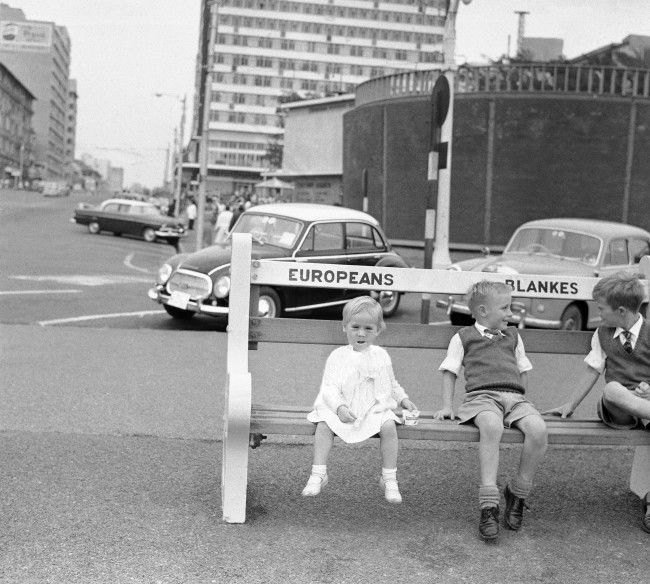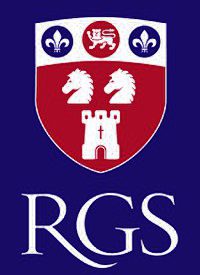
Yesterday, we spent a fantastic day being hosted by Centurion. The hospitality, generosity and friendliness were, as they always are, second to none. We came there from Stellenbosch, surely South Africa’s most beautiful town. Now, as we head to the apartheid museum this afternoon, I thought now might be the time to reflect further on Afrikaner identity and, in particular, the origins of the apartheid regime that dominated South Africa for most of the second half of the 20th century.
I realise that, for many reading this, apartheid seems merely history (I will reflect on that in the third of these posts). In essence, what apartheid sought to do was maintain and consolidate white rule in South Africa. It did so by institutionalising the racist politics that had been prevalent in South Africa before. More of which, anon.
Apartheid had its roots in Afrikaner politics, culture and identity. Its intellectual heart was in Stellenbosch. If Franschhoek shows off Afrikanerdom’s southern French side, and Paarl its strutting machismo, Stellenbosch is different. For a start, it’s very beautiful, it’s streets lined with 300-year-old oak trees and packed with buildings of the same vintage in the Cape Dutch style.
It’s also a university city, buzzing with student life.

It is the most prestigious of the Afrikaner universities. It was also the intellectual cradle of Afrikaner cultural nationalism, and apartheid. The founding father of the full-blown apartheid state, Dr HF Verwoerd, like so many other of its leaders, formed their ideas here. I wrote before about the key elements of the Afrikaner identity (see here): Dutch Reformed Protestantism and the idea of the elect, the Afrikaans language and the sense of an identity under threat from their British masters and their black and coloured majority. What the likes of Verwoerd and his generation of Afrikaners did is turn that into a full-blown nationalism and racial theory.
The theory revolves around the notion that white South Africans were the chosen people of the Cape, Transvaal and the Orange Free State, at the very least, and that meant, above all, Afrikaners.
The United South Africa formed in 1910 was anything but united. Blacks and coloureds were excluded from political and civic life. They were also increasingly subject to legalised discrimination, in part thanks to a British led state seeking to ease Boer fears and sensibilities. At the same time, however, the demand for unskilled Labour showed no signs of abating; nor did the desire of many blacks to flee an impoverished countryside and seek work in the cities.
And then came war. It is a historical cliche, but it is also true: the two world wars did a great deal to kickstart nationalism in the empire and in the wider world. It hastened the economic dislocation that was already forcing Afrikaners from the countryside into poorly paid industrial jobs, in which they were employed by the British and were undercut by black Africans working for lower wages. Meanwhile, South Africa was embroiled in a British war against the Germany that had (ineffectually, but loudly) supported the Boers.
It was around this time that the notion of the Afrikaner people was born. In 1918, a group of discontented Afrikaners formed a secret society, the Broederbond (or Brotherhood). Its aims were as much cultural as anything. Just by coining the term Afrikaner it proclaimed a distinct and separate South African identity. One of the hallmarks of 19th century nationalism was its emphasis on language as one of the purified the Afrikaans language of foreign (by which it meant black) elements. The Afrikaans language served as a symbol of nationhood, too. So did the Dutch Reformed Church. The British had granted freedom of religion a hundred years ago. Now the chosen people re-emphasised their separate identity. However, cultural nationalism, just as it did in Germany, or Ireland, was also the handmaiden to political nationalism.
So was fascism. It is hard to imagine the hold Mussolini’s Fascism or Hitler’s Nazism held over the political and cultural imaginations of people around the world in the 1930s. There were admirers in Europe, Britain and America. There were Asian fellow-travellers, notably in Japan, but also in the Middle East and India (the Indian nationalist leader, Bose, is a particular example). Given the historic and cultural links Afrikanerdom had to Germanic culture and politics, the attraction of Nazism in particular to many Afrikaner nationalists should not surprise us. An ideology that emphasised the racial superiority of Germanic whites, and their historic destiny to occupy the untamed lands around them, had a resonance to many. And, we need to remember that the true and ultimate destination of Nazi rule was not wholly evident at first. Nor are we in the modern west proving immune to the appeal of racially charged nationalist populism.
It was in the ‘thirties that Afrikaner intellectuals first coined the term apartheid. Its most important theorist, Verwoerd, spent a good deal of time in Nazi Germany. In 1935, the Nazis denied German Jews their German citizenship, and forbade them from marrying of having sexual relations with ‘pure Germans’. To enforce this, it created a labyrinthine bureaucracy based around pseudo-science, to determine who was German and who was not. Apartheid would follow suit.
It would take hold in the aftermath of the Second World War. The two world wars gave yet greater emphasis to the process of black urbanisation. It also changed Afrikaner politics. The man who led South Africa into the Second World War, Jan Smuts, was no shrinking violet liberal, but he could see which way the wind was blowing. In the face of the urbanisation process, the Fagan Commission proposed the gradual easing of the pass laws. The proposal produced outrage from Afrikanerdom: urban Afrikaners feared a black influx, farmers feared the loss of black labour (or the prospect of having to pay them better). In 1946, Smuts had used force to put down a miners’ strike. He feared more violence. So, he went to the country: well, the white country.
Just after union, Afrikaner politics had split, between Smuts South Africa Party and the more radical National Party. The National Party was, in many ways, the bastard son of the Broederbond and the new nationalist and racially driven intellectuals. It had been pro-German and opposed to South Africa’s entering the war. It positioned itself as the defender of Afrikanerdom. With fears of black migration, black militancy and black protest (see the entry on Robben Island, here), and with an overriding suspicion that the British authorities would sell them down the river, white South Africa rejected Smuts. and the National Party came to power.
The contexts of its victory are significant. In the first place, the British had just pulled out of India and Palestine. If Afrikanerdom was going to be defended, it might well have to be the Afrikaners that would be its defenders. Then, there were South African whites of more than one hue who felt themselves threatened by change. If the British backbone was weak, it would be stiffened by the election of a government that took a hard line. Hard line parties are often elected in such circumstances. And then, they played on the racism many white South Africans ingested with their mother’s milk: fear of the ‘black peril’ loomed large in an unapologetically racist campaign. Lastly, we should hardly be surprised nowadays by the election of hard right populist racially charged politicians by communities who have been left behind or have fallen behind economically. Did I mention that before?

The new government was led by DF Malan: yes, the girls’ first match was against DF Malan High School. His position was precarious at first: he led a coalition, and his majority of five depended on an electoral system that favoured rural (mostly Afrikaner) whites. The government had promised to protect white society against the ‘barbarous’ blacks (yes, Malan did actually say that); it also claimed that it would, simultaneously, civilise them. What it actually did was systematically discriminate against them, whilst ensuring the urban South Africa got the labour it needed. It delivered for its core vote, but whites of all kinds would soon come to see the fruits of it. The National Party, helped by an increasingly repressive police state, would remain in power until 1994.
In the years that followed their victory, the apartheid state was constructed. The Population Registration Act divided all South Africans into one of three races: whites, blacks or coloured (covering those descended from the mixture of Khoikhoi, slaves, other races and whites). The Mixed Marriages Act, and the Immorality Act, forbade marriage or sexual relations between different races. The Preservation of Separate Amenities Act enforced social segregation: whites had their own (superior) public facilities. An education Act banned blacks from white universities. Worst of all, the Group Areas Act divided South Africa between its racial groups. Hardly unsurprisingly, the whites got all the best bits. The Bantu Authorities Act created puppet governments to run the black areas.

The killer blow here was that all black or coloured South Africans working in white areas were effectively deprived of legal and civil rights: they were classed as immigrants in their own homes. The pass laws were reinforced, herding blacks and coloureds into poverty-ridden townships. The Suppression of Communism Act turned South Africa into a police state: opposition to the regime became a criminal offence and security forces were increasingly above the law, and brutal.

You will often hear it said that constitutional principles and the rule of law are the pillars of the defence against tyranny. With rare exceptions, neither worked in the National Party’s South Africa. When Verwoerd became prime minister in 1960, he further entrenched Apartheid. The Bantu statelets were given nominal independence, but carved up in such a way that white domination was unchallengeable.
If blacks were hit hard, so were the coloureds. The Cape Coloureds, as the were often known, were the product of the Cape’s history. Our bus driver, Wilfred, told us his family had Malay, black African and Irish roots. To classify these people, the apartheid regime developed an elaborate bureaucratic system. Like all such things it had its petty and ridiculous side. The supposed racial science often come down to measuring noses and lips, and the pencil test: would a pencil fall through the subject’s hair. The result of this petty cruelty was real cruelty. Coloureds were forcibly removed from their homes and their land by the Group Areas Act. Many would end up in the grim coloured townships of the Cape Flats. South Africa’s Indian population were victimised too.

Verwoerd took power in 1958. Then came the Sharpeville massacre, in which 79 black protestors were shot by police, the regime clamped down. The peaceful protests had been against the pass laws. In their aftermath, the government intensified repression, arresting more than 20,000 activists and outlawing the main black political movements, the African National Congress and the Pan-African Congress (much more of both anon). Meanwhile, the ANC’s Nelson Mandela was sentenced to life. Apartheid was further systematised. For Verwoerd, it was protecting the distinctive character of each race (above all, of the Afrikaners).
For quite a while, it seemed as it it had worked. Protest was stifled and white South Africa blossomed.

There was a new wave of white emigration to South Africa and its similarly white-dominated neighbour, Rhodesia (now Zimbabwe). Both regimes had their supporters abroad (more of which anon). However, as tyrannical states often are, the apartheid state would prove to be far less stable than it appeared. Thus, for now, Apartheid South Africa had its Indian summer, but the climate was about to change. That, however, is for the final part of this series.
For now, it is worth reflecting on the dichotomy we are coming to know well. Our hosts have been marvellous, and are fantastic people. But, there is a history we have to think about.












